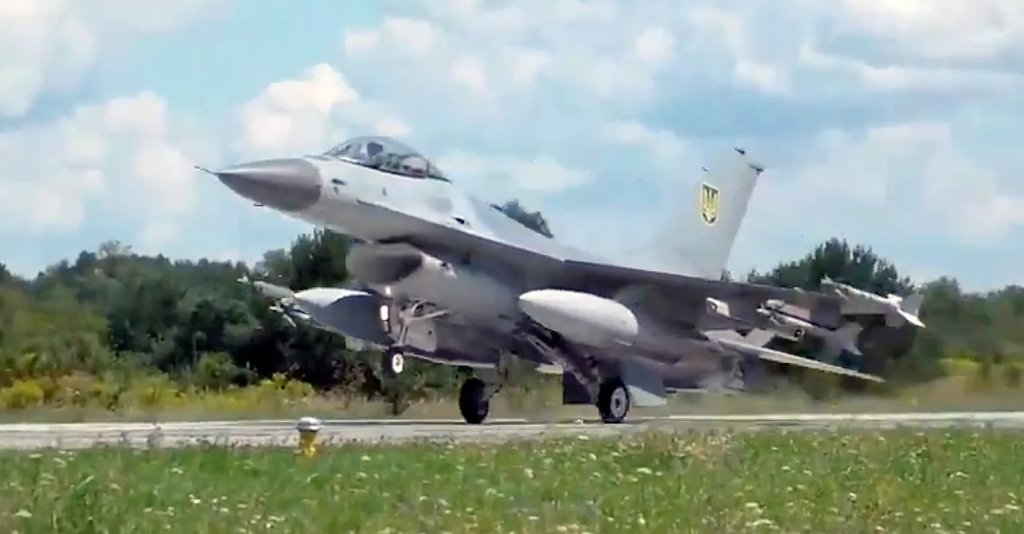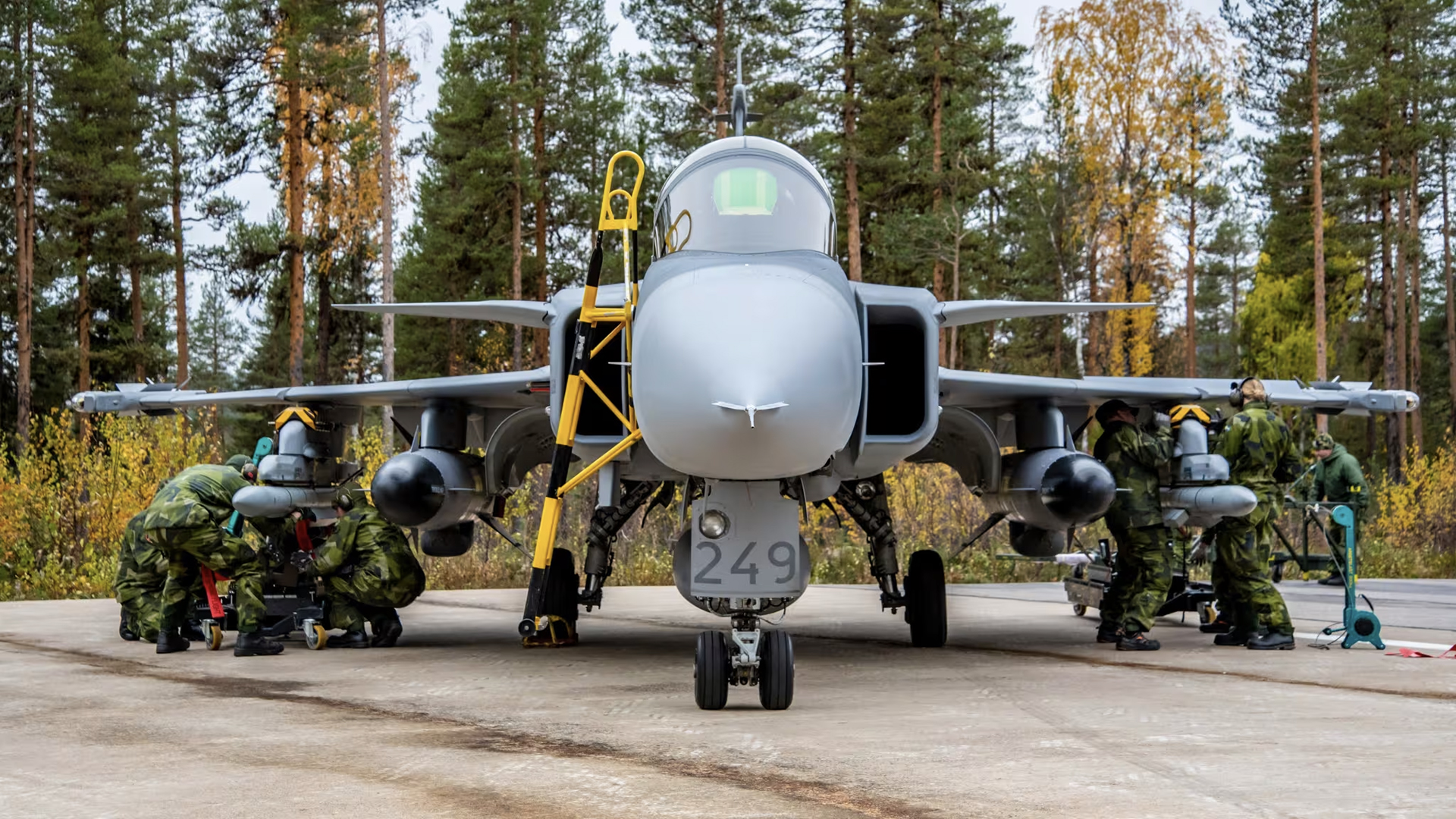Sweden is keeping the door open for a possible transfer of Saab JAS-39 Gripen fighters to Ukraine. Its latest military aid package – valued at a total of about $440 million – includes $220 million to purchase new “material kits” for its operational JAS-39C/D Gripen fighters, the Swedish government said Monday. That’s so those jets won’t have to be cannibalized for parts to be used in the newer Gripen-JAS-39E variants, making them potentially available to Ukraine.
However, there are no immediate plans to send Gripens to Ukraine and it is unclear how quickly such a transfer can happen given Sweden’s requirements for its own Air Force.

“At the moment, it is not relevant to transfer the JAS Gripen to Ukraine, as it would interfere with the introduction of the F-16,” according to a release from the Swedish Regeringskansliet, or Government Office. “However, the government continues to work on creating the conditions to possibly support Ukraine with the JAS-39 Gripen at a later stage. Material kits are the parts of the JAS-39C/D used in the construction of the new JAS-39E. By procuring material sets, conditions are created to be able to donate a number of JAS-39C/D, instead of the material sets being dismantled from operational JAS-39C/D.”
The release did not specify what the material kits consist of. We’ve reached out to the Swedish Air Force and Saab for clarification
Sweden currently has about 97 C and D variants in service. While they had planned to do away with all the C/D variants in favor of the E models, that was scrapped after Russia invaded Ukraine and Stockholm decided it wanted to maintain a larger Air Force.
Sweden’s long-term plan is to have 120 Gripens serving by 2030, with half being E variants. That would leave roughly 37 C/D models potentially available to Ukraine, but the number is likely a bit lower due to airframe fatigue and other factors. However, it remains highly questionable that Sweden can get 60 Es in service in that timeline, meaning a continued need for the existing airframes. That could reduce the number that could be available for Ukraine in the relatively near term. An additional factor is that because Sweden opted not to procure the two-seat F variant, there will be a continued need for the D model for training purposes, further reducing the amount of Gripens that could eventually go to Ukraine.

Sweden has exported a number of Gripens via Saab. In February, we noted that Hungary reached an agreement to up its purchase from 14 to 18 of those jets. The current Gripen user base is small and Saab has been unsuccessful in many attempts over the years to secure additional export deals. In addition to Hungary, Brazil, South Africa, and Thailand have purchased Gripen variants, while the Czech Republic operates a fleet under a lease agreement.
Sweden’s announcement about the Gripens comes months after an apparent disagreement between Stockholm and Kyiv over whether there was even interest in those jets.
In July, we reported that while Sweden was willing to send some to Ukraine, Kyiv nixed the plans. The Nordic nation’s foreign minister said that Ukraine wanted to concentrate on incorporating the anticipated donation of some 80 F-16 Vipers, some of which were soon to arrive, instead of folding another type of fighter into its Air Force.
“We must understand that Ukraine was given the opportunity to receive F-16 fighters, of which, of course, there are more in the NATO family,” Swedish Foreign Minister Tobias Billstrom told Voice of America at the time. “After all, more countries have F-16s than Gripen fighters. This has nothing to do with the Swedish government’s decision. Such a decision was made due to the fact that Ukraine came to the conclusion that having two fighter systems at the same time – both F-16 and Gripen – is too much.”

Ukrainian officials quickly denied that they turned down the Gripen offer.
“I have never heard of Ukrainians refusing to buy Gripen fighter jets,” Ihor Zhovkva, Deputy Head of the President’s Office said, according to Euromaidan Press. “On the contrary, this is a topic that my president constantly raises with the Swedish leadership.”
The Gripens “are as good as F-16s, and we are moving in this direction,” Zhovkva added.
The aviation chief of Ukraine’s Air Force, General Serhii Holubtsov, previously said the Ukrainian infrastructure is ready to accommodate Gripens, the publication reported.
Aside from concerns about integrating additional new airframes into Ukraine’s Air Force, the introduction of Gripen C/D variants makes a lot of sense, something we explored in early 2022 shortly after the all-out war broke-out.
“Another option, and possibly the best of all, would be Sweden’s surplus JAS-39C/D Gripen multi-role fighters. These light-to-medium weight fighters are built with great efficiency and reliability in mind. They were designed to be turned around in the bush by tiny teams of mainly conscripted groundcrew and flown from roadways and rough fields during wartime. Distributed operations under very harsh sustained wartime conditions, especially in the cold, are literally what the design is all about.
Their single F404-derivative engine (license-built by Volvo) drinks comparatively small amounts of fuel compared to the other options and the type has a wide array of available armory from multiple nations. It has all-around good performance, modern radar and avionics, and is small in size, making it hard to spot visually.
The Gripen really is well suited for the current combat doctrine Ukraine is using in Ukraine today, although the fact that it is a Swedish design makes it a bit harder for the U.S. and NATO to supply and support it. Still, other NATO members operate the type. There is also the question of how many Sweden will be able to give up at this time.“

Beyond money for Gripen material kits, this package, Sweden’s 17th to Ukraine, includes an unspecified number of additional RBS-70 man-portable air defense systems (MANPADS), six CB90-class fast-assault boats for riverine operations, anti-tank rounds and other equipment.
All told, Sweden is it has provided Ukraine with more than $4.6 billion in military aid since Russia launched its all-out invasion on Feb. 24. 2022.
While spending $220 million on new parts for the JAS-39E variant doesn’t guarantee the older C/D variants will be sent to Ukraine, that money keeps the option open.
“We are taking steps to maintain our freedom of action in order to give the Gripen to Ukraine at a possible later stage,” Defense Minister Pål Jonson said, according to the Swedish Aftonbladet news outlet.
In his thank you message, Ukrainian President Volodymyr Zelensky did not specifically address the Gripen donation.
“This important assistance, including anti-aircraft systems, anti-tank weapons, and financial contributions to address Ukraine’s urgent needs, will enhance our defense capabilities,” he said on Twitter.
Whether Zelensky was trying to tamp down expectations for the Swedish fighters is unclear. Regardless, unless something major changes, it will be years, if at all, before a significant number of Gripens patrol the skies over Ukraine.
Contact the author: howard@thewarzone.com
